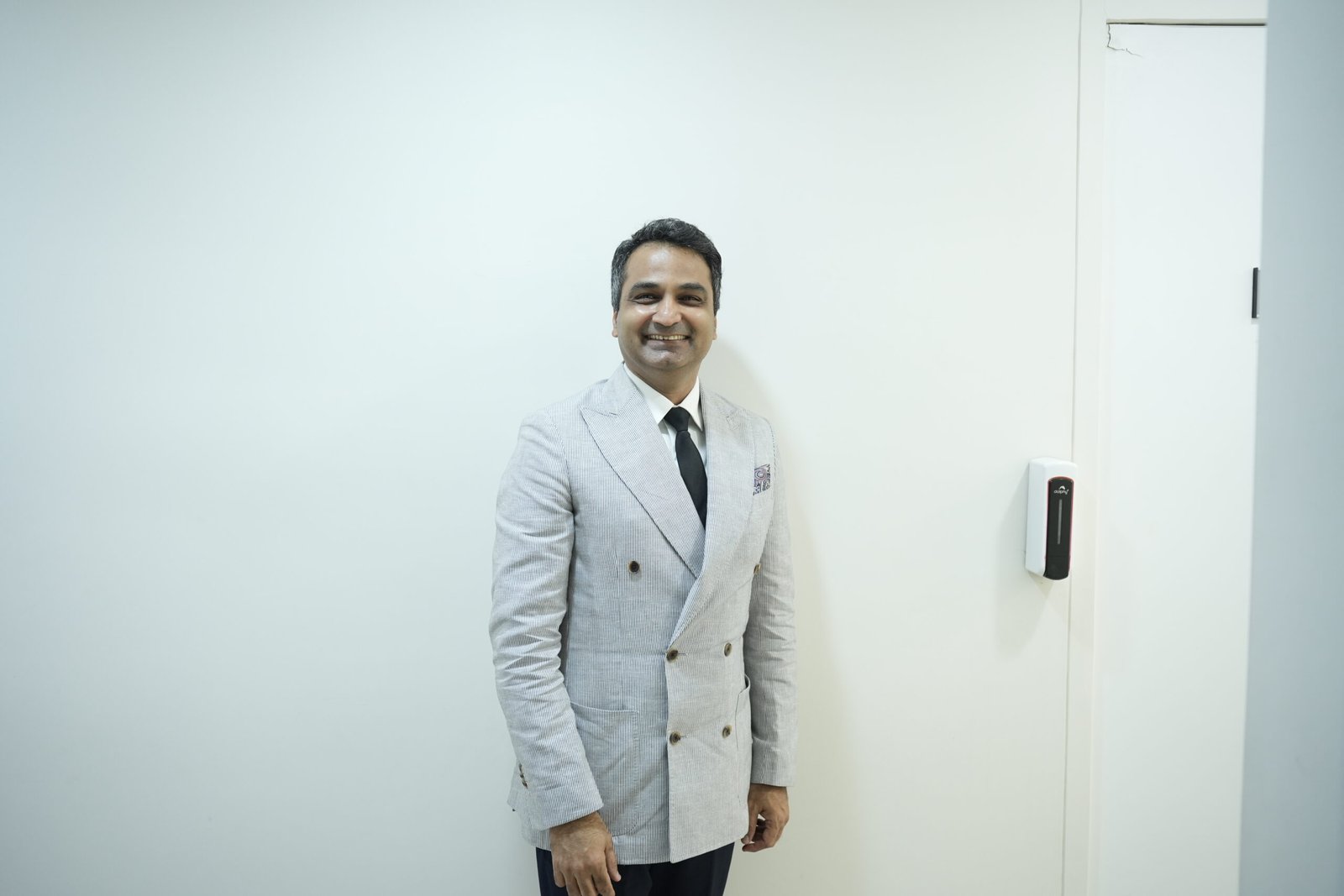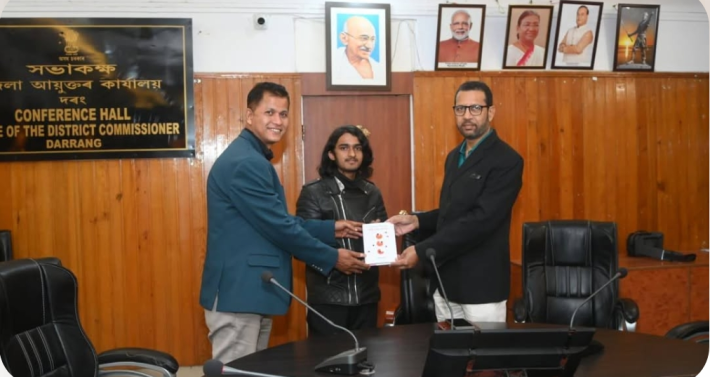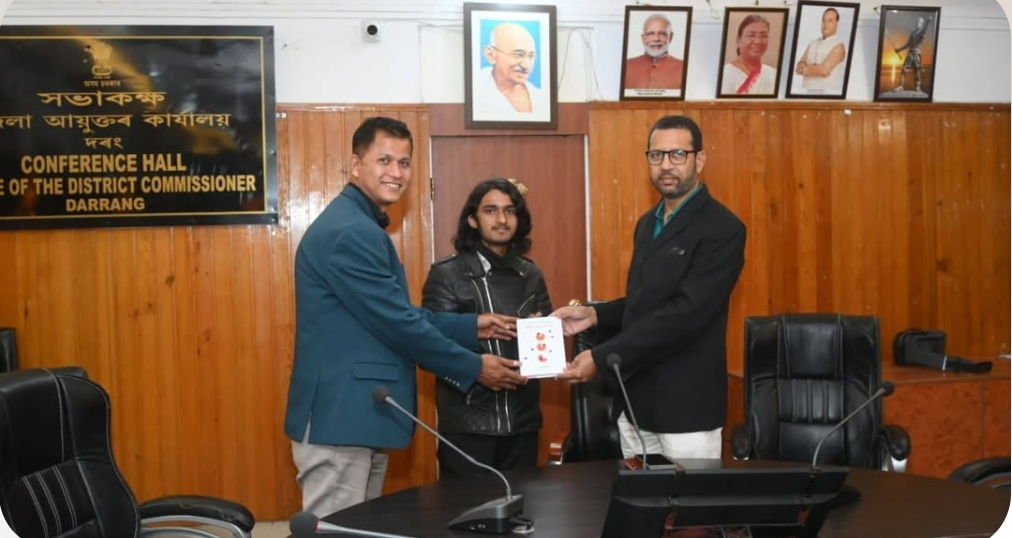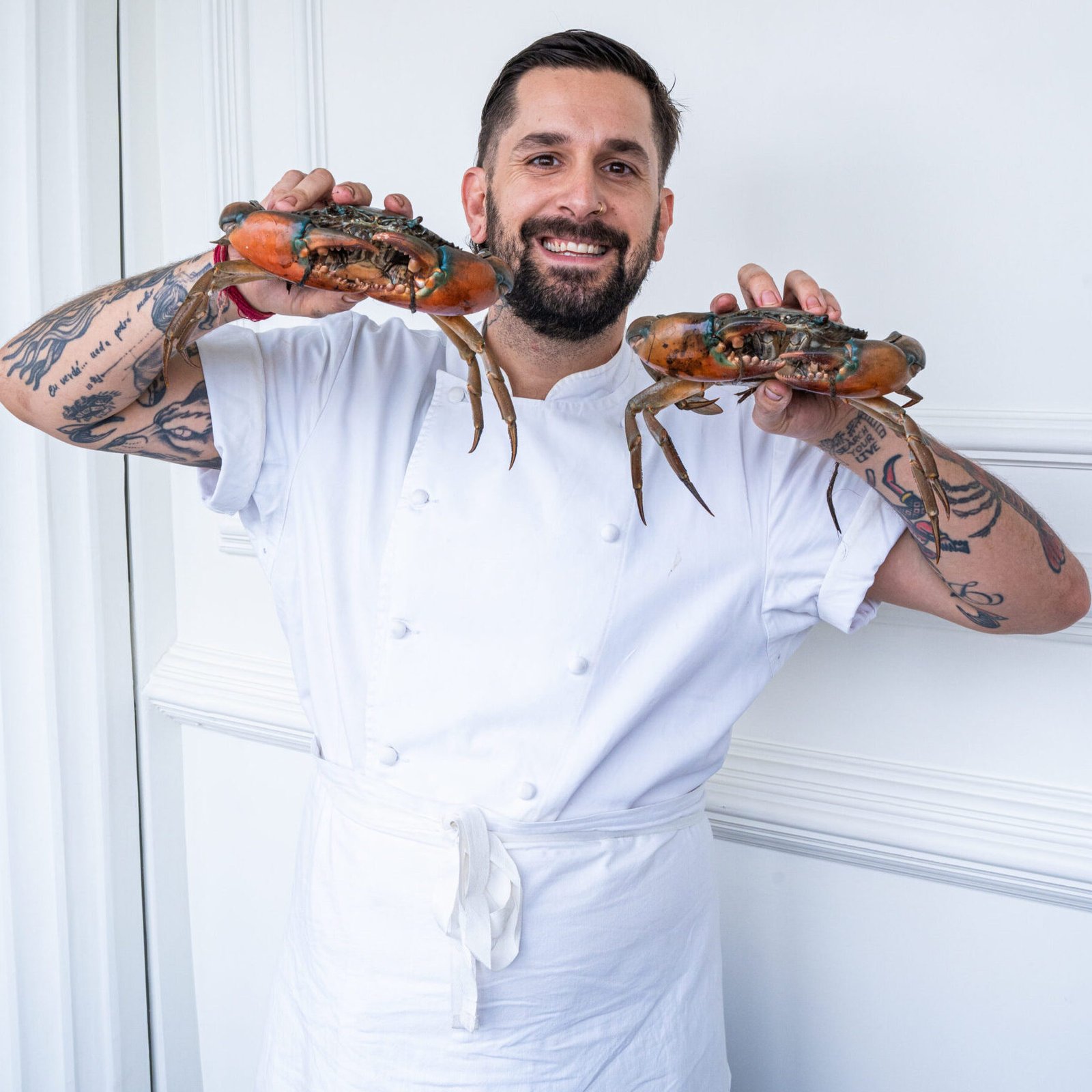Kalpesh Gawade, Founder & Director of Skinnovation Pvt Ltd on MCT
Kalpesh Gawade isn’t just a name in India’s aesthetic innovation space, he’s the force quietly but powerfully transforming it. As Founder & Director of Skinnovation Pvt Ltd, Kalpesh has always had his eyes set on what’s next.
Passionate about bridging global regenerative science with Indian consumer needs, he has a knack for spotting game-changing technologies before they hit the mainstream. With Meta Cell Technology (MCT), he’s introduced India to one of the most exciting breakthroughs in regenerative aesthetics… injectable, autologous exosomes, a first in the country.
Under his leadership, Skinnovation Pvt Ltd isn’t just launching products; it’s building movements founded on science, safety, and smart innovation. In an exclusive interview, Kalpesh Gawade talks to Sumita Chakraborty, Editor-in-Chief, TheGlitz, about Skinnovation Pvt Ltd, MCT, the science behind it, and why he believes the future of aesthetics and medicine belongs to intelligent regeneration.
MCT & More – Over To Kalpesh Gawade, Founder & Director, SKinnovation Pvt Ltd
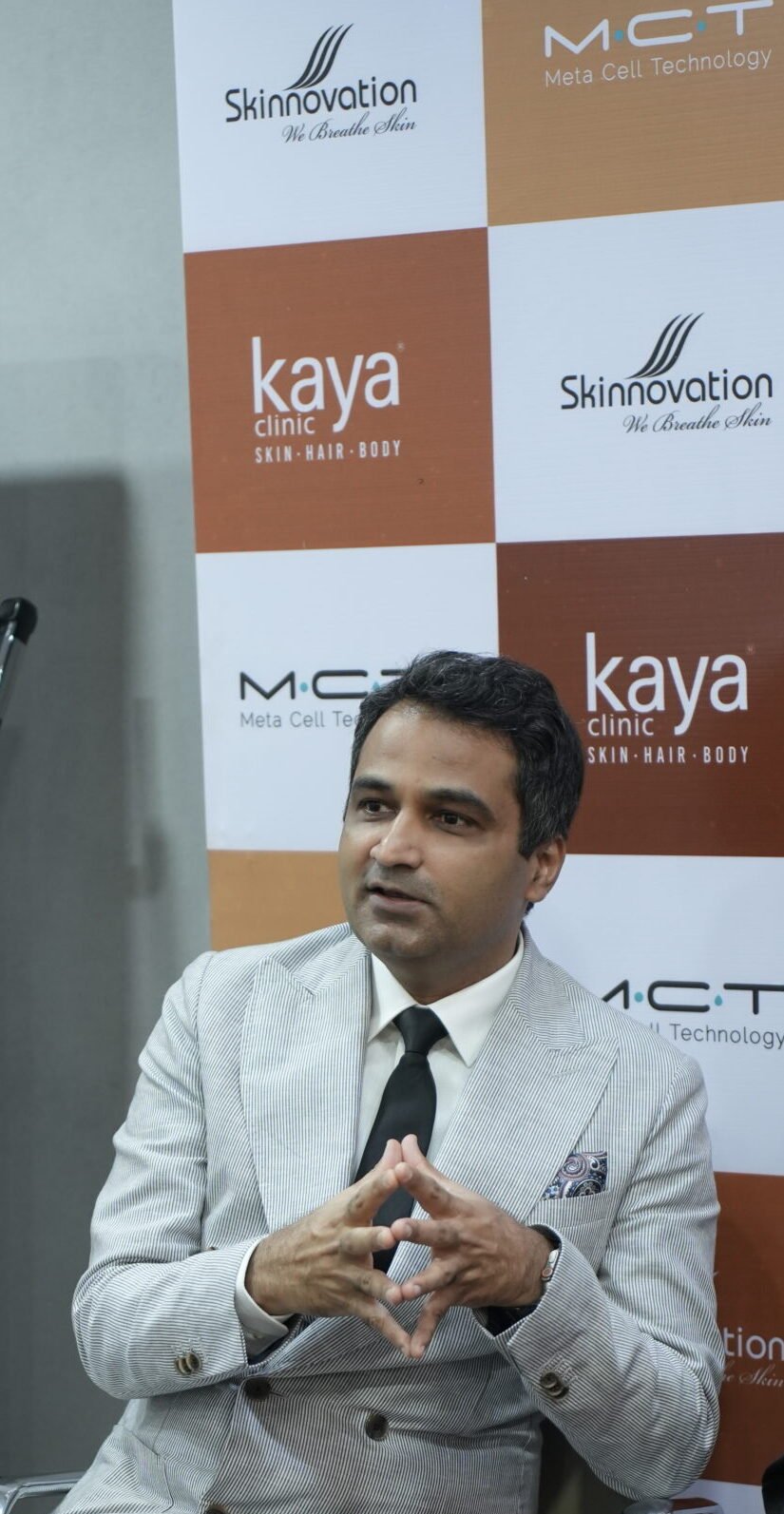
What inspired the development of Meta Cell Technology (MCT), and how did the collaboration with Kaya Skin Clinic come about?
Meta Cell Technology, or MCT, was conceptualised by Dr. Hernan Pinto, a pioneer in regenerative medicine from Spain. His vision was to create something far more advanced than traditional regenerative therapies like PRP. MCT is that next leap, it’s Super PRP and beyond. It produces autologous exosomes, which can be injected and are far more potent messengers than platelets, working at a cellular level to boost regeneration and repair. What makes MCT so special is that it’s completely autologous, meaning it’s derived from your body , making it extremely safe with minimal to no risk. And its applications go way beyond dermatology. It’s already showing promising results in gynecology, orthopedics, and various branches of regenerative medicine.
At Skinnovation, we’re constantly looking to bridge the gap between global innovation and Indian needs. MCT is a breakthrough we felt Indian consumers truly deserve. It’s science-backed, safe, and offers visible results.
Our partnership with Kaya has always been built on shared values of innovation, safety, and trust. Kaya, with its deep-rooted presence across the country and unmatched reputation in skin and hair care, was the perfect partner to bring MCT to a wider audience. More than just a product launch it’s a new era in regenerative aesthetics, and we’re proud to be shaping it together.
You’ve described MCT as a ‘smarter, science-driven approach’ to aesthetic outcomes, could you walk us through what sets it apart from traditional PRP or regenerative therapies?
Honestly, this is one of my favourite questions to answer. MCT truly represents the next chapter in regenerative aesthetics. While PRP has been around for a while and has certainly contributed to regenerative treatments, MCT takes it several notches higher. That’s why many experts are calling it ‘Super PRP’ …For good reason too. The science behind it is fascinating.
With MCT, we take the patient’s PRP and subject it to a patented process called ‘photothermal biomodulation’. This process is highly controlled and precise, and it leads to the formation of naïve exosomes, which are essentially the body’s bioactive messengers with powerful regenerative abilities. These autologous exosomes are then administered into areas like the scalp, skin, or other targeted regions, depending on the concern. What’s revolutionary here is that this is the first time in the world that autologous exosomes are being used in this way.
Compared to traditional PRP, which relies mainly on platelets and growth factors, exosomes go deeper. They facilitate cell-to-cell communication, stimulate repair, reduce inflammation, and enhance tissue regeneration more effectively and longer-lasting than conventional methods. So yes! MCT isn’t just another version of PRP. It’s a smarter, cleaner, and clinically superior evolution of it. And the results we’re seeing -especially in cases of hair thinning, skin rejuvenation, and even complex conditions – are nothing short of inspiring.
Exosomes are being called the next big thing in aesthetics. Can you simplify their function for the everyday client curious about MCT?
Good question! I believe it’s important to break this down in a way that’s easy to understand. Think of exosomes as the body’s natural messengers. They’re tiny, powerful carriers that transport important information, like growth factors, proteins, amino acids, and even genetic signals (mRNA), between cells. This information helps stimulate repair, regeneration, and healing in the body.
Now, in the context of MCT, we extract these exosomes from your plasma using a highly advanced process called photothermal biomodulation. It’s a controlled technology that activates and isolates only the most potent, ‘naïve’ exosomes, making the treatment both personalised and safe. When these autologous exosomes are introduced back into the scalp or skin, they don’t just sit there. They actually guide your body’s cells to regenerate, repair damaged tissue, and boost natural growth. That’s why we’re seeing such promising results in hair restoration, skin rejuvenation, and even anti-ageing.
In simple terms: if traditional PRP is like a nutrient shot, exosomes are like sending intelligent instructions to your body on what exactly to fix and how to do it, faster and better. And the best part? Since they come from your body, there’s minimal risk and high compatibility making it one of the safest and smartest regenerative solutions available today.
The MCT process involves photo-thermal activation, could you share more on how this specific technology improves outcomes and patient safety?
Absolutely. The photothermalbiomodulation process is really at the heart of what makes MCT so uniquely effective. Unlike conventional PRP or plasma-based therapies, where you’re relying purely on platelets and growth factors, MCT uses a precise, controlled light and heat-based modulation to activate the plasma.
This step is vital as it triggers a response that leads to the formation of naïve exosomes, which are far more active and targeted in promoting regeneration. What this means in real terms is that we’re not just injecting growth factors, we’re injecting intelligent messengers that actually tell your body where to repair, regenerate, and rebuild.
From a safety point of view, this is a game-changer. Since everything is derived entirely from the patient’s body, there’s virtually no risk of allergy, reaction, or incompatibility. The process is sterile, standardised, and doesn’t involve any synthetic additives. So, we’re able to offer patients a solution that’s not just more effective, but also safer, smarter, and longer-lasting than many traditional regenerative treatments.
As the first in India to offer injectable exosomes, what challenges did you face in bringing this innovation to market?
Introducing any breakthrough technology ahead of its time comes with its own set of challenges, and MCT was no exception. There was a lack of awareness, not just among clients, but even within the medical community. Unlike PRP, which had gained familiarity, exosomes were still a relatively unknown concept in India. So one of the biggest tasks was education – not just about the science, but about the safety, efficacy, and long-term benefits.
Another major challenge was building trust in something so new. We had to invest a lot in clinical support, training programs for doctors, and ensuring that practitioners truly understood the science behind it before offering it to their patients. We also had to create demand where none existed. Which meant building the category from scratch. That involved working closely with forward-thinking partners like Kaya, initiating conversations in aesthetic and dermatology communities, and slowly but steadily building momentum.
But I believe that’s the beauty of being first – you get to shape the narrative. Today, with the kind of results we’re seeing, that early effort is paying off. And most importantly, patients are benefiting from a technology that’s safe, effective, and avant garde.
Where do you see MCT heading in the next 3–5 years, could we expect wider medical applications beyond aesthetics?
Absolutely. While our current focus is firmly rooted in dermatology and we are already seeing exceptional results in hair growth, anti-ageing, and skin rejuvenation, we believe we’ve only scratched the surface of what MCT can do. In the next 3 to 5 years, our goal is to see every progressive aesthetic clinic across India equipped with MCT.
The vision is not just to make it available, but to make it an essential part of every regenerative treatment protocol. We’re actively building a strong clinical databank to support the efficacy and outcomes, and the feedback from doctors and patients has been incredibly promising. But what excites us even more is the potential of MCT beyond aesthetics. Since exosomes are such powerful biological messengers, their role in areas like wound healing, scar modulation, gynaecology and even orthopaedics is already being explored globally. And we’re closely watching and participating in that evolution.
At Skinnovation, we’re committed not just to launching new technologies, but to building ecosystems around them! Through education, access, and responsible innovation. MCT has the potential to be a defining force in regenerative medicine, and we’re just at the beginning of that journey.
